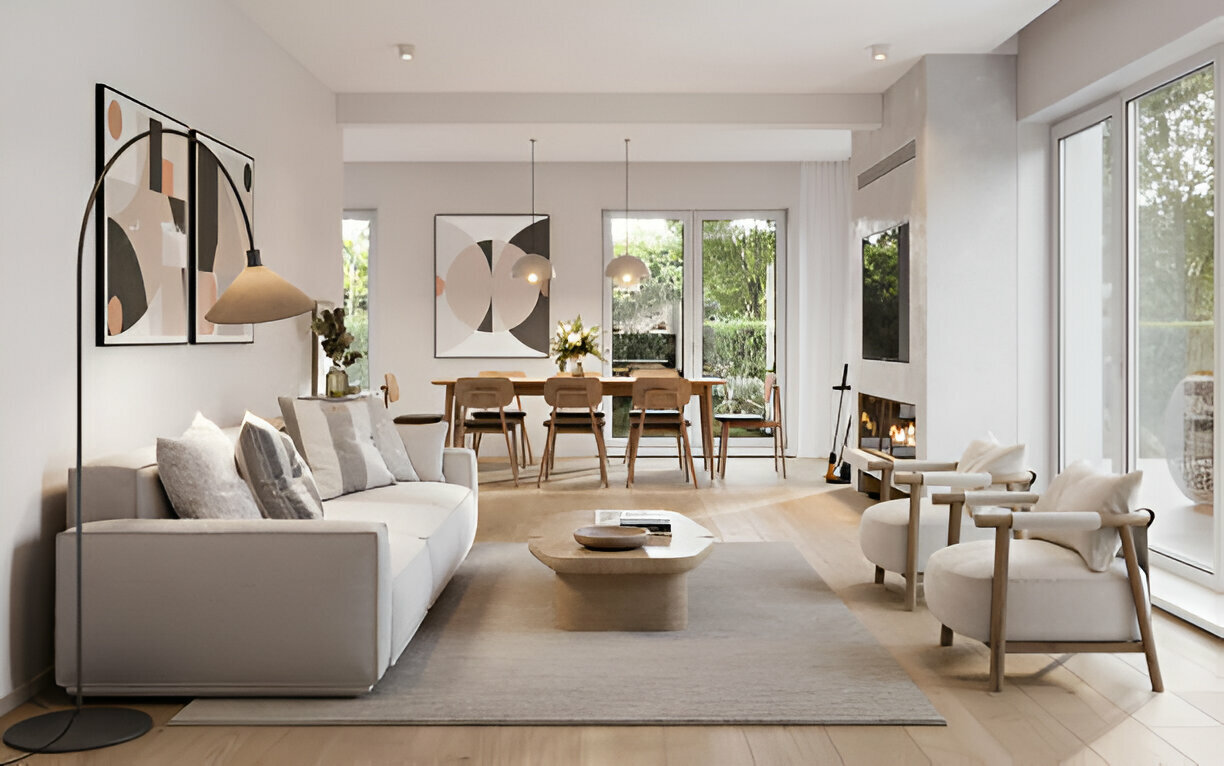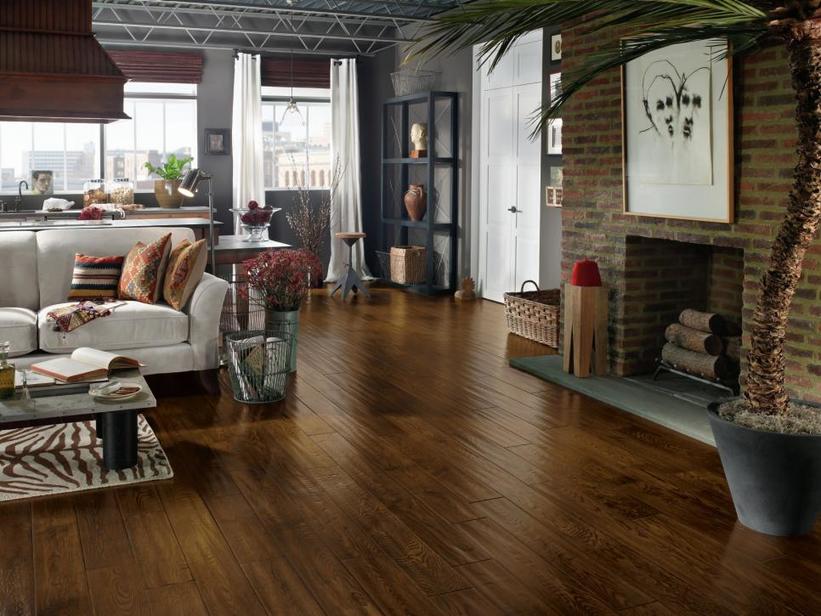

Small spaces in your home should feel cozy and inviting, not cramped and uncomfortable. Designing unique solutions for such spaces can feel intimidating and present a challenge for homeowners.
When thinking of creative strategies for these spaces, it’s important to keep their functionality in mind while maximizing the square footage of your home. With a little effort and a few design tricks, small homes can be transformed into expansive spaces.


The smartest way to maximize space in your small home is to incorporate storage units or shelves in corner areas. Narrow shelves in your kitchen can serve as an alternative to a built-in pantry while floating shelves in your living room provide extra storage. These shelves also function as home decor or display units, adding aesthetic appeal to the room.
Built-in storage units such as shelves, cabinets, or wall-mounted closets around the bedroom are among the smartest investments you can make. They help streamline the items you need most in your daily routine while eliminating the need to dig around for things like coffee mugs or winter clothing.
All in all, open shelves add abundant storage to your home and elevate the overall architectural charm. They give character to your rooms and remove cluttered corners.
Dual-functioning furniture pieces integrated with storage units are a smart innovation and the optimal choice for your home. The most popular options for convertible furniture include sofa beds, foldable desks, and adjustable dining tables. These pieces are highly functional and do not occupy permanent space in your home. You can also consider a Murphy bed, which transforms your bedroom into a fully functional living or dining area during the day, offering plenty of extra space.
Consider swapping a traditional coffee table for an ottoman. You can use decorative items to create a sturdy tabletop, which can also serve as a serving surface. Alternatively, the ottoman can provide additional seating for hosting larger parties or accommodating more guests.
Furniture items that come with built-in storage are another clever solution. Beds or sofas with drawers underneath, coffee tables with hidden compartments, headboards with bookshelves, and bed frames with built-in storage are all excellent multi-functional furniture choices.
Vertical spaces are often overlooked when maximizing storage in small homes. Tall shelving, hanging storage pieces, and wall-mounted cabinets hold a lot of potential and can add tidiness to your home by clearing clutter. Floor-to-ceiling shelves can store items that aren’t used daily; hooks and racks can hang pots, pans, and bicycles; and mini-floating shelves can replace bulky nightstands.
Other clever ideas include mounting the desk to the wall with shelves above it, hanging a pot rack in your kitchen, and adding a second rod in your closet to double your organizing space. These vertical storage solutions leave room for creative possibilities and enhance your home design.
The oldest and most underrated design element is the use of mirrors to make your home feel roomier. Hanging a large mirror near a window or propping it up against a wall will create depth in your room by reflecting a large portion of your space. Adding mirrors to furniture, such as closet doors, can also be a dramatic addition to your room.
Contrary to popular opinion, even small mirrors can make a difference in your home when placed correctly. Slim hallways and cozy corners can appear more expansive with the addition of mirrors, creating the illusion of openness. Choosing mirrors with ornate frames or antique designs can also add character to the overall vibe of your space.
Using too many dark colors can create chaos in your home instead of warmth. Light or pastel colors brighten rooms and create a sense of openness and spaciousness. Bold colors, on the other hand, can make your small home feel even cozier.
An optimal choice is to bathe your room in white paint, which reflects light off the surface, making it bright and open, while adding a pop of color as a background to tie the room together. You can also use shades of cream and pastels, complemented by pops of color throughout the room. To fully embrace this concept, consider choosing light-colored flooring, furniture, and countertops to enhance the overall feel of your space.
Natural light has proven to be the best companion for cozy homes. Keep your windows open and unobstructed, or use white semi-sheer curtains to accentuate the natural light entering your home. This will create a bright, open, and airy feel in your space.
Windows visually expand a room, especially if they are large, floor-to-ceiling windows. Leaving them bare enhances their enlarging effect on a room, and you might also consider clearing the outside view, such as trimming foliage. You could also consider adding a skylight or installing additional windows wherever necessary. When doing so, opt for uPVC windows, as they require minimal maintenance, and make sure to position them correctly in your home.
Lastly, you can add home decor items to your spaces to define specific zones inside your home. In small homes, some rooms may serve multiple functions. For instance, your dining room can also be a space where your family unwinds and relaxes. The use of area rugs in such rooms can help demarcate territories and provide a visual cue for each area, creating two distinct spaces within the same room.
Room dividers can also serve this purpose. This way, you can maximize the utility of your home’s layout and improve the overall flow of the space. When decorating, choose items that amplify the visual effect of your room. One great option is using oversized art instead of multiple smaller pieces that can create a cluttered, chaotic feeling. A single large piece will serve as a focal point, drawing attention and adding an expansive feature to the room. As a general rule, choose a piece that occupies about two-thirds of the wall space.
Other design elements to consider, which can make your space feel larger, include limiting the use of multiple patterns and prints, adding patterns to your ceiling to draw attention upward, creating a gallery wall, opting for transparent furniture, and using elongated flooring options such as tiles or wood panels installed across the entire width of your room.
The options are limitless just think creatively!
By applying these 7 simple tips, you can transform even the smallest of spaces into functional and inviting areas. From maximizing vertical storage to using mirrors and light colors, there are endless design solutions to make your home feel more expansive. The key is creativity and thoughtful planning.
A healthy smile is not just a measurement of beauty; it is an indicator of…
Being good on TikTok is about more than just following trends and timing them well;…
Wondering how to boost online sales and customer engagement in your furniture eStore? Take inspiration…
Are you looking to improve the speed of your WooCommerce store to be more efficient,…
TikTok's AI features totally change the way that videos are made because they unveil possibilities…
The aviation sector is growing continuously. Nowadays, airlines use modern technology for better pilot training.…